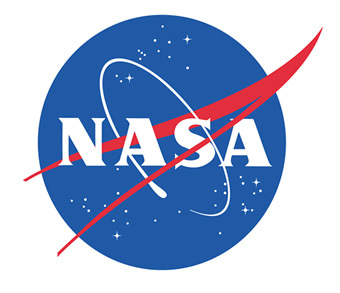 At 4:30 pm Eastern today, the National Aeronautics and Space Administration issued a Press Release on Student Spaceflight Experiment Program (SSEP) Mission 1 and Mission 2 to ISS experiment payloads flying on SpaceX-1, October 7, 2012.
At 4:30 pm Eastern today, the National Aeronautics and Space Administration issued a Press Release on Student Spaceflight Experiment Program (SSEP) Mission 1 and Mission 2 to ISS experiment payloads flying on SpaceX-1, October 7, 2012.
The full text of the NASA Press Release is provided below.
Over 200 partner institutions – school districts, corporate foundations, businesses, community foundations, 26 Space Grant lead institutions, local and regional governments, and universities –have made SSEP Mission 1 and Mission 2 to ISS possible. Virtually all of these institutions have representatives subscribed to this SSEP National Blog. To the participating schools and school districts, please share the adventure with your students, teachers, and families, and stand up and recognize all of the remarkable student research teams. To all the other partner institutions, please share this with your staff, accept a heartfelt thank you, and be proud of what we have done together.
Other news: Mission 3 to ISS program operations commenced on September 17, 2012, with 17 communities, 6 of which are on their second, third, or fourth SSEP flight opportunity. The Mission 3 payload will be flying to ISS in Spring 2013. Mission 4 to ISS will be announced nationally October 2012, for experiment design starting Spring 2013, and a flight to ISS in Fall 2013.
Relevant Links to SSEP webpages:
Mission 2 to ISS Communities and Partner Organizations
Mission 2 to ISS Flight Experiments
Mission 2 to ISS Flight Mission Patches
Mission 1 to ISS Communities and Partner Organizations
Mission 1 to ISS Flight Experiments
SSEP Flight Phase Operations for SpaceX-1
SpaceX-1 Launch Viewing Plans for SSEP Attendees at Kennedy Space Center
Download the Press Release as a PDF
The direct link to the Press Release:
http://www.nasa.gov/home/hqnews/2012/oct/HQ_12-347_SSEP_SpaceX.html
Ann Marie Trotta
Headquarters, Washington Oct. 3, 2012
202-358-1601
ann.marie.trotta@nasa.gov
RELEASE: 12-347
SPACEX DRAGON TO CARRY 23 STUDENT EXPERIMENTS TO SPACE STATION
WASHINGTON — Twenty-three microgravity experiments designed by participants of the Student Spaceflight Experiment Program (SSEP) will become part of space history Oct. 7. They will be launched to the International Space Station aboard the SpaceX Dragon, the first commercially developed and built American spacecraft to fly a resupply cargo resupply mission to the station.
Twelve of the SSEP experiments are getting a second flight opportunity. They were delivered to the space station on a SpaceX demonstration mission in May, but were not completed. The other 11 experiments are new.
Each experiment will study the effects of microgravity on physical, chemical and biological systems. The students have been immersed in every facet of research, from defining investigations to designing experiments, writing proposals, and submitting to a formal NASA review for selection of flight experiments. The 23 experiments represent more than 7,000 students and almost 2,000 proposals.
“SSEP offers a unique flight opportunity that allows students to experience both the excitement and the challenges inherent in conducting research in a microgravity environment,” said Roosevelt Johnson, deputy associate administrator for education at NASA Headquarters in Washington. “It really is STEM [science, technology, engineering and mathematics] in action, using the International Space Station — which has America’s only orbiting National Laboratory — to host these students’ science experiments.”
SSEP began in June 2010 as a cooperative venture by the National Center for Earth and Space Science Education (NCESSE) and NanoRacks LLC, a national STEM education initiative. The organizations work together to give hundreds of students across a community the opportunity to design and propose real experiments to fly in low Earth orbit. Teams submit formal flight experiment proposals, and a formal proposal review process selects the flight experiment for the community. A suite of programs leverages the flight experiment design competition to engage the entire community, including a mission patch art and design competition.
SSEP payloads were flown in 2011 aboard space shuttles Endeavour and Atlantis on their respective STS-134 and STS-135 missions. The third round of experiments in May was the first to be conducted in orbit by space station astronauts. Next week’s Dragon launch is the fourth flight opportunity. A fifth suite of experiments is scheduled for spring 2013.
More than 100 SSEP students, teachers, and family members will travel to Florida to attend the SpaceX launch from Cape Canaveral Air Force Station.
SSEP is one of many programs that use NASA’s science and exploration missions to encourage students to pursue a STEM-centric school curriculum. NASA’s Office of Education is committed to inspiring and developing the next generation of scientists and engineers through experiential, hands-on learning.
To learn more about the SSEP, including future opportunities for student participation, visit:
To learn more about NASA’s education program, visit:
To learn more about the International Space Station, visit:
-end-
SSEP is undertaken by the National Center for Earth and Space Science Education (NCESSE) in partnership with NanoRacks LLC. This on-orbit research opportunity is enabled through NanoRacks LLC, which is working in partnership with NASA under a Space Act Agreement as part of the utilization of the International Space Station as a National Laboratory.
SSEP is the first pre-college STEM (Science, Technology, Engineering, and Math) education program that is both a U.S. national initiative and implemented as an on-orbit commercial space venture.

Comments are closed.